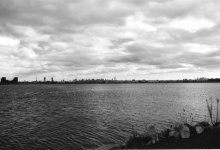nayanan
Member
Hi,
I'm a user of ZI camera and the ZM 50 lens. ZI is my first RF camera, and the ZM 50 is my only RF lens so far. Now I'm interested in two-lens line-up, and considering to get the ZM 28 lens for a 50-28 pair.
For a while, I was debating between the reportedly better performance of the ZM 25 vs. the built-in frameline advantage of 28mm. After trying out the 25mm FOV with the Bessa L and 25/4 combo for a while, now I'm pretty convinced I like 28mm focal length better anyway.
One thing I'd like to make sure before I go buy one is that its edge performance is high enough as other superb siblings in the ZM line up for general picture taking situations. I'm asking this because I don't know much about how to translate the MTF values into practical shooting situations.. 😕
Any comment or insight you share based on experience will be greatly appreciated.
Regards,
Han
I'm a user of ZI camera and the ZM 50 lens. ZI is my first RF camera, and the ZM 50 is my only RF lens so far. Now I'm interested in two-lens line-up, and considering to get the ZM 28 lens for a 50-28 pair.
For a while, I was debating between the reportedly better performance of the ZM 25 vs. the built-in frameline advantage of 28mm. After trying out the 25mm FOV with the Bessa L and 25/4 combo for a while, now I'm pretty convinced I like 28mm focal length better anyway.
One thing I'd like to make sure before I go buy one is that its edge performance is high enough as other superb siblings in the ZM line up for general picture taking situations. I'm asking this because I don't know much about how to translate the MTF values into practical shooting situations.. 😕
Any comment or insight you share based on experience will be greatly appreciated.
Regards,
Han
Last edited:



